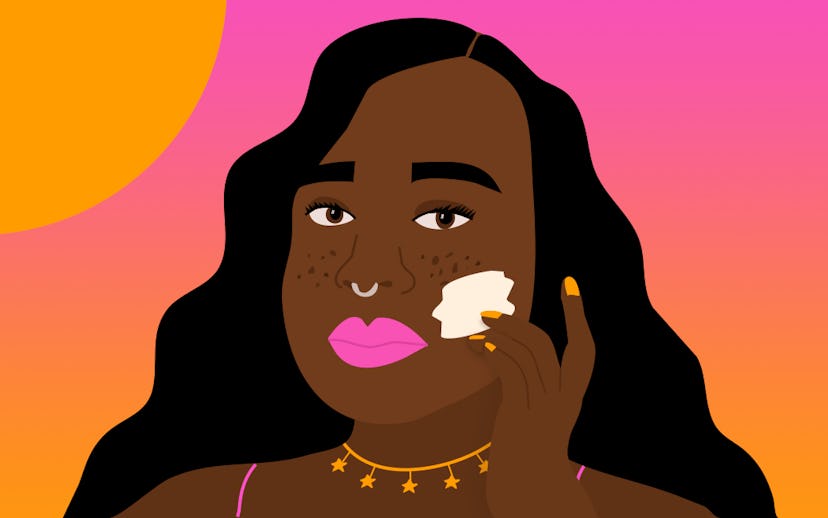
Beauty
You Should Still Wear Sunscreen Even If Your Makeup Has SPF
We're talking to you, Coachella attendees (and everyone else)
Are you sick of hearing us waxpoeticaboutsunscreen yet? Well, too bad, because we're not stopping any time soon. Until the sun stops burning and that black hole devours us all, we'll continue educating you all—you'll thank us someday, we promise.
The next topic we're here to tackle? Makeup formulated with sunscreen. When BB Creams first came on to the market, a big reason people pounced on them was because they were more lightweight than the typical base makeup, but also because many came with SPF. It seemed like those adverse to adding sunscreen as a step in their skin-care routine suddenly got a pass. But this was a false sense of sun-security, because, in reality, most BB cream products only include SPF 30 or less and don't provide adequate protection. In fact, almost all face makeup products with SPF—be they foundation, concealer, or tinted moisturizer—don't do much to block the sun's rays.
Or, they could do a lot to block the sun's rays, but, as Dr. Joshua Zeichner explains, you would have to apply layers upon layers of those products in order for them to do so—and that's just not how most people wear makeup. "If you apply a quarter-size of the product onto your full face, your makeup will look caked on and, for this reason, people often do not get enough protection," he explains. "Plus, makeup is not applied to all areas of the face, which means that that skin is completely unprotected."
The solution for this is simple: wear regular sunscreen, always. You can also layer makeup with SPF and regular sunscreen on top of each other as a security blanket of sorts and, as Dr. Janelle Vega lets us know, "the layers will have additive effects," but she makes clear: "Not to say that SPF 20 plus SPF 30 = SPF 50, but it will be better than just the protection available in makeup with SPF."
We know it's a lot to keep in mind, but, really, every part of your face should have sunscreen applied to it, if possible. Which is why it's important to consider that even though SPF-laden makeup isn't sufficient on its own, it is a good idea to use it when you find it, especially when the makeup is meant for areas that are particularly delicate. Like, Supergoop! came out with a trio of eyeshadows recently that are formulated with SPF, which might seem unnecessary at first, but Dr. Zeichner says the eyes are actually an area of the face that's super-susceptible to sunburn, aging, and developing skin cancer. "While your eyes are usually open and the skin on the upper lids is therefore relatively protected, it is still important to treat eyelid skin, including the lower lid, for optimal protection," he notes. Dr. Vega says using an eye cream with SPF in it is also an option (you can even layer with the eyeshadows), and she also suggests wearing broad-brimmed hats and UV-protective sunglasses.
Another part of the face that's particularly vulnerable are the lips. "The lower lip is especially at risk for sunburn and skin cancer because it faces upwards towards the sun," Dr. Zeichner explains. "The lips are more at risk of sunburn than the rest of the face because they lack the pigment we have in our skin which gives national protection against the sun." He adds that wearing lipgloss can actually increase your risk of sunburn because "it enhances UV light penetration, just like baby oil can increase your risk of a burn on the skin." So, consider adding a lip balm or lipstick with SPF to your sun protection arsenal and save the gloss for nighttime.
Overall, as Dr. Vega says: "Don't think of sunscreen in makeup as your primary protection, think of it as an additional layer." Regular degular SPF should always act as your base. "Find a sunscreen that you love and will be easy for you to use on a daily basis," she says. "It will make such a huge difference for you in the long term for your skin health!"